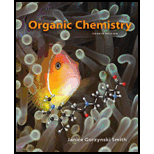
Concept explainers
(a)
Interpretation: The formal charge on
Concept Introduction: Formal charge is the electrostatic charge on an atom in a molecule or polyatomic ion if all bonding electron are shared equally between pairs of atoms. The formal charge for an atom in a molecule or ion is calculated on the basis of the Lewis structure of the molecule or ion.
(b)
Interpretation: The formal charge on the
Concept Introduction: Formal charge is the electrostatic charge on an atom in a molecule or polyatomic ion if all bonding electron are shared equally between pairs of atoms. The formal charge for an atom in a molecule or ion is calculated on the basis of the Lewis structure of the molecule or ion.
(c)
Interpretation: The formal charge on the
Concept Introduction: Formal charge is the electrostatic charge on an atom in a molecule or polyatomic ion if all bonding electron are shared equally between pairs of atoms. The formal charge for an atom in a molecule or ion is calculated on the basis of the Lewis structure of the molecule or ion.
Want to see the full answer?
Check out a sample textbook solution
Chapter 1 Solutions
Organic Chemistry (Looseleaf)
- Could you draw all valid resonance structrues for these two? I understand the rules for drawing resonance structures but I miss a lot of them.arrow_forwardExplain why this Lewis structure for CO is not as valid as the Lewis structure you drew in theprevious question even though it has no “hot spots” of + or charge (formal charges).arrow_forwardIs bond formation endothermic or exothermic? Write a + or sign above the arrow in the previousquestion to represent the sign of the energy change associated with the arrow.arrow_forward
- Write Lewis structures for the following: (a) SeF6 (b) XeF4 (c) SeCl3+arrow_forwardThe C=O double bond is called a “carbonyl bond.” Acetone and othercarbonyl compounds are introduced in some texts along with this structure a. Is this an important resonance structure of acetone? Explain. b. Does this structure convey any useful information about acetone? If so, what?arrow_forwardCan I have help drawing the Lewis structure with a minimilized formal charge in the the attached image.arrow_forward
- Label the formal charges on each atom in each reasonable structure below?arrow_forwardWhat is the formal charge on each atom indicated in the following structure?arrow_forwardConsider compounds A–D, which contain both a heteroatom and a double bond. (a) For which compounds are no additional Lewis structures possible? (b) When two or more Lewis structures can be drawn, draw all additional resonance structures.arrow_forward
 Chemistry for Today: General, Organic, and Bioche...ChemistryISBN:9781305960060Author:Spencer L. Seager, Michael R. Slabaugh, Maren S. HansenPublisher:Cengage Learning
Chemistry for Today: General, Organic, and Bioche...ChemistryISBN:9781305960060Author:Spencer L. Seager, Michael R. Slabaugh, Maren S. HansenPublisher:Cengage Learning Chemistry by OpenStax (2015-05-04)ChemistryISBN:9781938168390Author:Klaus Theopold, Richard H Langley, Paul Flowers, William R. Robinson, Mark BlaserPublisher:OpenStax
Chemistry by OpenStax (2015-05-04)ChemistryISBN:9781938168390Author:Klaus Theopold, Richard H Langley, Paul Flowers, William R. Robinson, Mark BlaserPublisher:OpenStax Organic Chemistry: A Guided InquiryChemistryISBN:9780618974122Author:Andrei StraumanisPublisher:Cengage Learning
Organic Chemistry: A Guided InquiryChemistryISBN:9780618974122Author:Andrei StraumanisPublisher:Cengage Learning



